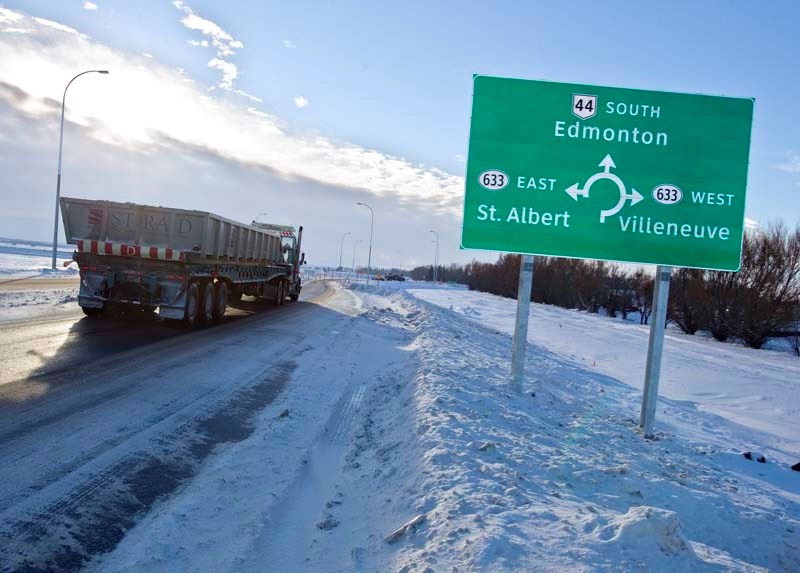The new roundabout at Villeneuve is now open to traffic but some finishing work will continue through the winter and in the spring.
The province is spending $6.4 million on the roundabout, which is like a traffic circle but smaller in diameter and with only single lanes going in and out.
“They’re designed a bit smaller so that encourages lower speed, which in turn results in a safer intersection and it can accommodate more vehicles per hour [than a traffic circle],” said Alberta Transportation spokesperson Jasmine Franklin.
The province didn’t consider a four-way stop for the busy intersection because these wear out more quickly under truck traffic and are not as safe as a roundabout, Franklin said.
“A roundabout gives a better long-term performance,” she said.
The intersection of Highway 44 and Highway 633 had been controlled by stop signs facing east and westbound traffic. The roundabout now forces traffic into a circular pattern. This reduces the risk of head-on collisions and T-bone collisions, the latter of which have been a common occurrence at this location, Franklin said.
The correct protocol for navigating a roundabout is to yield to traffic already in the circle and proceed when there’s a safe gap in traffic.
The circle is designed to accommodate traffic travelling about 30 to 40 kilometres per hour. Once in the circle, motorists should use a right turn signal to indicate that they are exiting, Franklin said.
The Villeneuve location still has many orange construction markers in place. These will be replaced with white delineator posts this winter, Franklin said. Come spring, these temporary white markers will be replaced by concrete, pork-chop shaped dividers, which will guide traffic in and out of the circle, Franklin said.
The stop signs currently at the site are temporary and will eventually be replaced by yield signs.
Alberta Transportation states that roundabouts lead to a reduction of more than 90 per cent in fatalities, an 80 per cent reduction in injuries and a 40 per cent reduction in total number of crashes, compared to conventional intersections with traffic signals.




